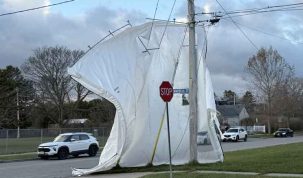Changes will help improve residents’ quality of life while keeping homes safe
Ontario is responding to high levels of COVID-19 vaccination in many long-term care homes by making changes that will help homes safely resume communal dining and social activities. These changes will help improve residents’ quality of life while keeping homes safe.
“Our government puts the safety and well-being of long-term care residents at the heart of everything we do,” said Dr. Merrilee Fullerton, Minister of Long-Term Care. “The high vaccination uptake in long-term care homes means we can take further steps towards bringing social interactions back — supporting the mental and emotional well-being of residents while protecting their physical well-being.”
Based on advice from public health experts and in direct response to residents and their families, an updated Directive #3 for Long-Term Care Homes from the Chief Medical Officer of Health was released today, along with a guidance document for long-term care homes. The updated Directive #3 sets out that long-term care homes can now safely resume activities such as communal dining and indoor events and gatherings, with precautions.
Additionally, residents and their caregivers who are fully immunized may choose to have close physical contact beyond what is required for care and supervision, such as hugging.
Once the current provincewide Stay-at-Home order is lifted, further direction allowing social and temporary outings for fully immunized residents will be issued. Under the updated Directive #3, all residents, regardless of their immunization status, can leave their homes on an essential absence, which includes outdoor exercise, buying groceries, or visiting the pharmacy, while the Stay-at-Home order is in place. Essential absences are not permitted when a resident is symptomatic, has been identified as a COVID-19 case or a contact, or as directed by local public health.
All residents continue to be able to leave their long-term care homes for medical absences or compassionate absences at all times.
Homes must provide residents with a medical mask for outings and remind them to maintain appropriate physical distancing and hand hygiene while away from the home.
The province continues to actively monitor COVID-19 activity, particularly in this vulnerable sector, and ensure that the health and safety of residents and staff in this sector remains a top priority, while improving residents’ quality of life.
Quick Facts
- The new guidance document bases precautions on long-term care homes’ immunization coverage rates in both residents and staff.
- The guidance document identifies extra precautions should be taken to support activities in homes that do not meet a threshold of 85 per cent of residents and 70 per cent of staff fully immunized.
- All Ontarians, including all staff, visitors, and residents in long-term care homes, must continue to practice public health measures including masking, physical distancing, hand hygiene, and staying at home when they are sick. While COVID-19 immunizations have been demonstrated to be very effective, it is important for Ontarians to not let their guard down during this crucial period in the ongoing fight against the COVID-19 pandemic.
- As of May 4, 2021, across Ontario, 95 per cent of long-term care residents are fully immunized and more than 85 per cent of staff have received at least their first dose.






















